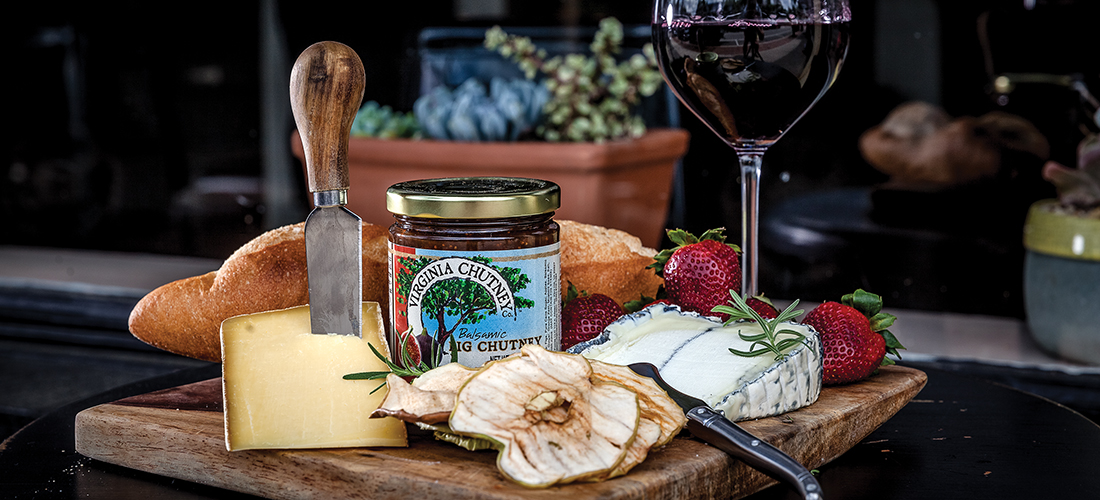
Savoring the heart and soul
By Angela Sanchez
If you, or anyone you know, has ever traveled in Europe, you may be familiar with the feeling that the wine and food seem to taste better, certainly different, than if you mimicked the same thing in the United States. It may be because you’re on vacation or with special people in your life, but it’s also that you are enjoying a tradition of food or wine original and unique to that place. That is terroir, the French word for earth, land, even soil. It is the component that is the heart, the soul, the makeup of where the grapes are grown that eventually make a wine what it is. Wine expert Hugh Johnson describes terroir as an essential part of what makes a great wine. It is the character and personality, combined with weather and winemaking techniques, that are distinct and apart from wines of other regions produced from the same grapes. The same can be said for other agricultural products that are unique to a place. Both wine and food can have terroir, but does it matter if they do?
If you want a sense, or taste, of where the wine is produced — a feel for what that particular area is like — then terroir matters. If you simply want to enjoy a good quality product, then it probably doesn’t. Terroir acts as a point of reference, a standard. It’s a way to delineate a wine made from chardonnay grapes anywhere in the world, at any price point, from one that is specific to a place, as distinctive as the artist who made it. Some of the best, and best-known, examples of terroir are the wines of Burgundy. Chardonnay from Burgundy, France, is full of terroir. Puligny-Montrachet, Chassagne-Montrachet and Chablis are all produced from the same grape but could not be more different. Chablis is limestone and vigor, and Chassagne is round and lush. Any great chardonnay from any other growing region in the world will use the wines from this area as a model for their wine. If allowed to be a true product of their environment — the vineyards are not over-cropped and the winemaker doesn’t have a heavy hand — these wines will also exhibit terroir. Two great examples are Chateau Montelena Chardonnay from Napa, California, bearing classic lemon vibrancy and cream, and Hamilton Russell Chardonnay from Hemel-en-Aarde, South Africa, which is hugely influenced by the sea and elevation. Both are beautiful expressions of their own place. They distinguish themselves from others based on their environment, soil, climate — their terroir. Wines rich in terroir are often small production and carry a hefty price based on the fact that they are produced from very specific areas, often one vineyard that could be only a few acres.
Does a wine that is produced for sheer enjoyment and to fit a “crowd-pleaser” style or a consumer-friendly price make it any less of a wine? No. It’s like a tomato produced in a hothouse in winter or a cheese produced in a factory. Each serves a great purpose — widespread, reasonably priced enjoyment. They don’t, however, have the terroir of a fresh burrata cheese crafted in the Puglia region of Italy or a San Marzano tomato from Sicily. These accessible wines have a “style,” often an imitation of an original, that has been adapted to make it more approachable both in taste and price. Nothing wrong with that. But, it’s important to recognize and appreciate products with true terroir, if for no other reason than to experience something of their craft, made from the land, with a true sense of place. It’s a way to connect to tradition and small farms. You don’t have to look far to find them. There are some affordable examples produced from single-vineyard sites in California, Oregon and Washington.
You can find great examples of terroir in food, too, like grass fed beef from Argentina and John’s Island South Carolina tomatoes. Two of my favorite cheese examples are Meadow Creek Appalachian from Virginia and Humboldt Fog from California. The first is a natural rind tomme-style cow’s milk cheese exhibiting grassy, herbal buttery flavors with a bright yellow hue. The second is a bloomy rind goat’s milk cheese from Humboldt County made by Cypress Grove. It is famous for its distinct blue vegetable ash and it’s tangy earth sharpness. Both exhibit nuances from the land where the herds graze.
Terroir does matter. Sometimes it’s expensive and hard to find, but always worth the search. PS
Angela Sanchez owns Southern Whey, a cheese-centric specialty food store in Southern Pines, with her husband, Chris Abbey. She was in the wine industry for 20 years and was lucky enough to travel the world drinking wine and eating cheese.





